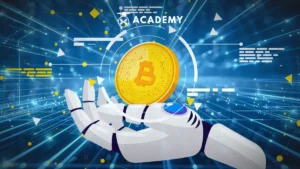In economics, the concept of the “trickle-down effect” has long been a hot topic of discussion among economists, analysts, and politicians.
This idea serves as the foundation for a number of economic policies that impact the distribution of wealth and societal well-being.
Here’s a detailed explanation of what the trickle-down effect is, its history, how it works, and examples of key policies related to it.
What is the Trickle Down Effect?

Are you familiar with the term “trickle-down effect”? Essentially, this concept is often discussed in the context of economics and can also be relevant in the crypto world.
In the marketing world, the “trickle-down effect” refers to a phenomenon where fashion trends flow from the upper class to the lower class within society.
This phenomenon can also refer to how new consumer products, when first introduced to the market, are priced very high and are only affordable to the wealthy.
However, over time, the price of these products starts to decrease, making them more accessible to the general public. Additionally, the “trickle-down effect” can describe the rapid spread of advertising through word-of-mouth communication or viral marketing.
Definition of Trickle Down Effect in Economics
The trickle-down effect is a concept that describes the expectation that the benefits gained by the wealthy and large corporations will “trickle down” to other segments of society, ultimately benefiting everyone.
For example, when large corporations receive tax cuts, it is hoped that they will use those funds to expand their businesses, which in turn would create more jobs and increase workers’ incomes.
This trickle-down theory shares similarities with supply-side economics, but the trickle-down concept is more focused.The theory posits that targeted tax cuts are more effective than broad tax cuts.
As a result, tax cuts are more often directed toward the wealthy, with the expectation that their positive impact will eventually be felt across all levels of society.
History of the Trickle Down Effect: From Fashion to Economics
Below is the history of the trickle-down effect, from its origins in fashion to its relevance in economics, which is important to understand.
Origins of the Term in the 19th Century
The concept of the trickle-down effect originated in the 19th century through the work of Rudolf von Jhering, who first wrote about cultural diffusion. He traced how fashion trends spread from the upper class to the lower class.
Von Jhering’s main view was that the value of a fashion trend diminishes once it is adopted by everyone.
As a result, the upper class feels compelled to find and follow new trends, which are then followed by the lower layers of society.
Conspicuous Consumption by Thorstein Veblen
This theory was later incorporated into the concept of conspicuous consumption by Thorstein Veblen in his book The Theory of the Leisure Class.
In Veblen’s work, it is explained that individuals purchase luxury goods and services to showcase their wealth to others.
In a more modern context, the trickle-down effect applies not only to social class but also to age, ethnicity, or gender, as explained by Grant McCracken in Culture and Consumption.
Modern Applications of Trickle-Down in Economics
The modern application of the trickle-down theory in economics is evident in the policies adopted by leaders like Ronald Reagan in the United States and Margaret Thatcher in the United Kingdom.
This theory became central to their approach in managing their countries’ economies, based on the belief that policies benefiting the upper class, particularly tax cuts for large corporations and wealthy individuals, would ultimately generate economic benefits for all layers of society.
How the Trickle-Down Effect Works in Economic Policy
In terms of economic policy, here is an explanation of how the trickle-down effect works, which is important to understand.
Tax Cuts for the Upper Economic Class
One common application of the trickle-down effect is tax cuts for the upper economic class, including large corporations and wealthy individuals.
The goal of these tax cuts is to encourage investment and economic growth. However, the outcomes of such tax policies are often a subject of debate.
Critics argue that tax cuts for the wealthy can worsen economic inequality.Meanwhile, supporters claim that this policy can create new jobs and stimulate economic growth, ultimately benefiting all levels of society.
Investment Incentives for Large Corporations
Policies that provide investment incentives to large corporations are also an aspect of the trickle-down effect concept.
Governments may offer incentives, such as tax reductions or financial assistance, to companies that invest in large projects or create jobs.
However, the outcomes of these incentives are also a topic of discussion. Some studies indicate that companies often use these incentives for their own benefit, such as buying back their stocks, rather than investing in economic growth that would benefit society as a whole.
Economic Deregulation
In relation to the trickle-down effect, deregulation is expected to provide more freedom for companies to operate and generate profits.
However, the impacts of deregulation need to be evaluated thoroughly. Some inappropriate deregulation policies can lead to environmental damage, increased economic inequality, and violations of workers’ rights.
Examples of Trickle Down Effect Policies Around the World
Here are some examples of trickle-down effect policies around the world that are important to know.
1.Tax Cuts Under George W. Bush
In the early 2000s, U.S. President George W. Bush made tax reform one of the main focuses of his administration. The trickle-down economic theory served as the foundation for this tax cut policy. He reduced inheritance and income taxes for the wealthy while also providing reductions for the middle class, with support from Congress.
2. Great Depression Stimulus by Herbert Hoover
After the economic crisis of 1929, President Herbert Hoover believed that the best solution for the depression was to provide significant aid to companies and industrial leaders. However, his efforts were unsuccessful, resulting in widespread public disapproval. This ultimately paved the way for the election of Franklin D. Roosevelt, who campaigned on a different economic platform known as the New Deal.
3. Reaganomics
President Ronald Reagan is almost synonymous with the trickle-down economic concept or supply-side economics. Under his leadership, the administration worked with Congress to pass two tax reform laws during the 1980s. These policies lowered the top tax rate by nearly 50% for high-income earners, from 73% to 28%.
Impact of the Trickle Down Effect in the Crypto World
Not only in the general economy, but the trickle-down effect can also impact the crypto world. Here’s an explanation of its effects that you should know.
Influence of Large Investors on Crypto Prices
In the crypto world, we can see the potential for a trickle-down effect. For instance, when large investors or “whales” purchase significant amounts of cryptocurrency, it can drive up the price of those assets and benefit all holders, including smaller investors.
Risk of Massive Sell-Offs by Whales
Just like in traditional economics, the trickle-down effect in crypto doesn’t always work smoothly. For example, when whales sell their assets massively, it can lead to a price drop that harms smaller investors.
Application of the Trickle Down Concept in Crypto
The concept of the trickle-down effect in the crypto market is evident through the behavior of whales, which affects the volatility and price movements of assets. When whales buy large amounts, asset prices can surge, attracting smaller investors who hope to profit from the positive trend.
This price increase can create a sense of optimism in the market, increasing participation and demand, allowing profits from large investors to “trickle down” to smaller investors.
Is There a Trickle Down Effect in Indonesia?

In Indonesia, the concept of the trickle down effect is often discussed, particularly in relation to economic development.
For example, when the government provides tax incentives or financial assistance to large companies, it is expected that the benefits of these policies will flow down and help low-income communities.
Weaknesses of the Trickle Down Effect
Although the trickle down effect has served as a foundation for various economic policies for decades, its effectiveness in addressing economic inequality remains a hotly debated topic.
In-depth research indicates that the impact of the trickle down effect may not be as strong as expected.
For instance, a study conducted by the National Bureau of Economic Research found that tax cuts for the wealthy did not show significant effects on economic growth or a decrease in unemployment rates.
Moreover, empirical data shows that economic inequality in many countries has actually increased in recent decades, despite the implementation of policies based on the trickle down effect.
Conclusion: Trickle Down Effect in Economics and Crypto
So, that concludes our interesting discussion on what the Trickle Down Effect is, along with its impacts and examples of policies, which you can read in full at INDODAX Academy.
In summary, the benefits of the trickle down effect in traditional economics include the potential to stimulate economic growth and create jobs through tax cuts and incentives for the upper classes.
The hope is that these benefits will “trickle down” to lower layers of society, attracting more investment and economic participation.In the crypto world, this effect is observed when large purchases by “whale” investors increase asset prices, thereby attracting attention from smaller investors and creating a broader market dynamic.
However, the drawbacks of the trickle down effect include the potential for increased economic inequality and the risk of significant losses for smaller investors when “whales” sell their assets en masse.
The high volatility in the crypto market can exacerbate this situation, leading to substantial losses for unprepared investors. Therefore, it is essential for stakeholders to understand the risks and opportunities generated by these policies and market dynamics to make more informed decisions and mitigate potential negative impacts.
FAQ: Trickle Down Effect
1. What is the Trickle Down Effect?
The trickle down effect is a phenomenon where the benefits received by the upper economic class are expected to provide advantages to all levels of society.
2. How does the Trickle Down Effect work?
Tax cuts and incentives are given to the upper economic class, with the expectation that this will create jobs and boost the economy as a whole.
3. What are examples of Trickle Down Effect policies around the world?
Examples include tax cuts during the George W. Bush era, Herbert Hoover’s stimulus after the Great Depression, and Reaganomics policies.
4. Does the Trickle Down Effect apply to crypto?
Yes, when large investors (whales) make significant investments, they can influence the price of crypto assets, benefiting smaller investors.
5. What are the criticisms of the Trickle Down Effect?
Many critics argue that the benefits of these policies often do not reach lower levels of society and, instead, worsen economic inequality.





 Polkadot 8.91%
Polkadot 8.91%
 BNB 0.54%
BNB 0.54%
 Solana 4.81%
Solana 4.81%
 Ethereum 2.37%
Ethereum 2.37%
 Cardano 1.35%
Cardano 1.35%
 Polygon Ecosystem Token 2.11%
Polygon Ecosystem Token 2.11%
 Tron 2.85%
Tron 2.85%
 Market
Market


